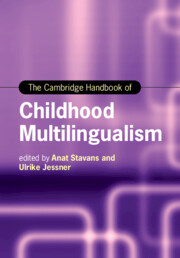Book contents
- The Cambridge Handbook of Childhood Multilingualism
- Cambridge Handbooks in Language and Linguistics
- The Cambridge Handbook of Childhood Multilingualism
- Copyright page
- Contents
- Figures
- Tables
- About the Editors
- Contributors
- Acknowledgments
- Multilingualism Is Not Bilingualism +1: An Introduction
- Part One Becoming and Being a Multilingual Child
- Part Two Cognition and Faculties in Multilinguals
- Part Three Family Language Policy
- 11 Establishing and Maintaining a Multilingual Family Language Policy
- 12 Parental Input in the Development of Children’s Multilingualism
- 13 Multilingualism, Emotion, and Affect
- 14 Siblings’ Multilingual Discourse
- Part Four Language(s) and Literacy of Multilingual Children through Schooling
- Part Five Socialization in Childhood Multilingualism
- Part Six Multilingual Children’s Landscape
- Subject Index
- Country Index
- Language Index
- References
11 - Establishing and Maintaining a Multilingual Family Language Policy
from Part Three - Family Language Policy
Published online by Cambridge University Press: 18 August 2022
- The Cambridge Handbook of Childhood Multilingualism
- Cambridge Handbooks in Language and Linguistics
- The Cambridge Handbook of Childhood Multilingualism
- Copyright page
- Contents
- Figures
- Tables
- About the Editors
- Contributors
- Acknowledgments
- Multilingualism Is Not Bilingualism +1: An Introduction
- Part One Becoming and Being a Multilingual Child
- Part Two Cognition and Faculties in Multilinguals
- Part Three Family Language Policy
- 11 Establishing and Maintaining a Multilingual Family Language Policy
- 12 Parental Input in the Development of Children’s Multilingualism
- 13 Multilingualism, Emotion, and Affect
- 14 Siblings’ Multilingual Discourse
- Part Four Language(s) and Literacy of Multilingual Children through Schooling
- Part Five Socialization in Childhood Multilingualism
- Part Six Multilingual Children’s Landscape
- Subject Index
- Country Index
- Language Index
- References
Summary
As an increasingly established research field, family language policy (FLP) provides a very useful lens to view how bi/multilingual home language-use patterns are influenced by socio-political ideologies and economic factors at the macro level and by family members’ language ideology at the micro level. This chapter starts with an introduction to FLP and outlines the development phases of the field. It then provides a discussion of the major research contributions to the field. Following that, it provides a synthesis of the extant research on how FLP is established and maintained in a range of countries and contexts, particularly in multilingual families. The synthesis focuses on internal factors, such as emotion, identity and cultural practices, and child agency in the negotiation of a family language policy. Lastly, insights gleaned from the more diverse range of social contexts are taken into consideration when making implications for parents, educators, and policy makers and a call for future research.
Keywords
- Type
- Chapter
- Information
- The Cambridge Handbook of Childhood Multilingualism , pp. 257 - 277Publisher: Cambridge University PressPrint publication year: 2022
References
- 1
- Cited by

